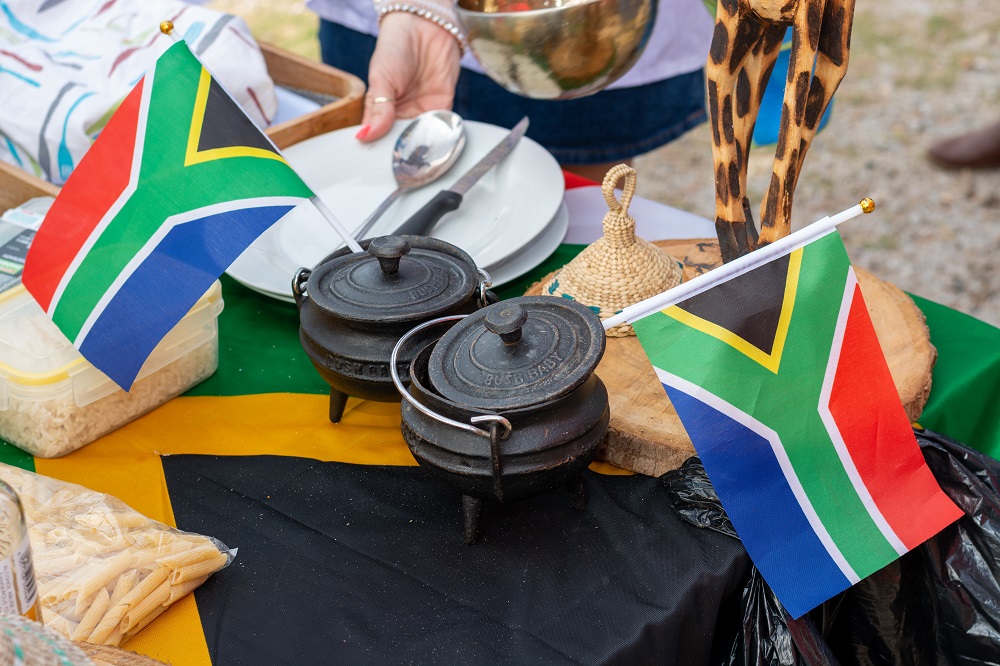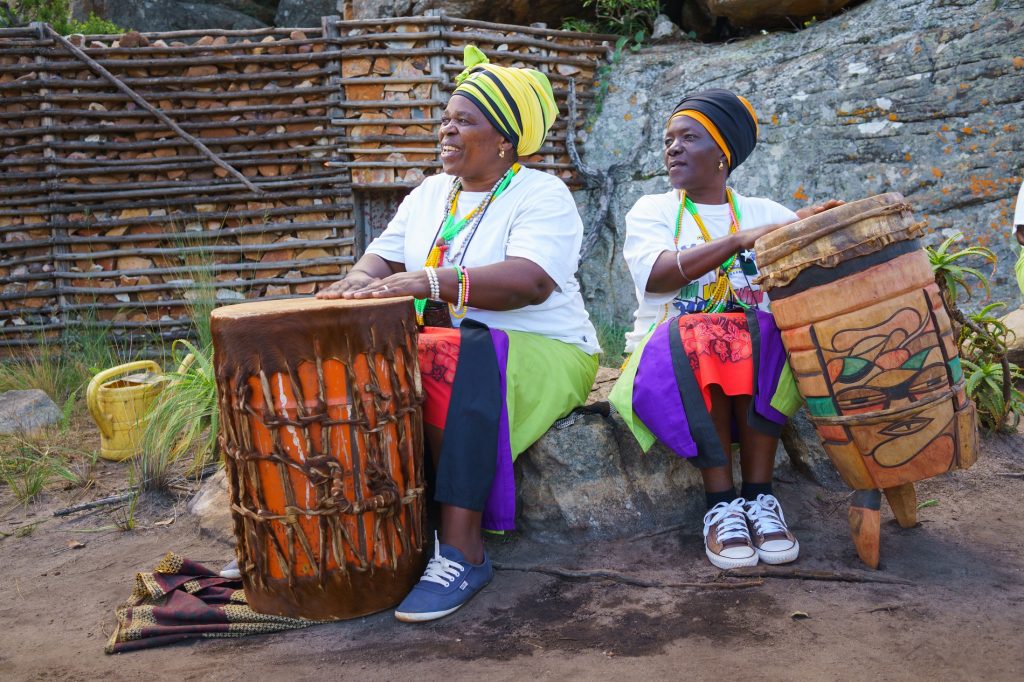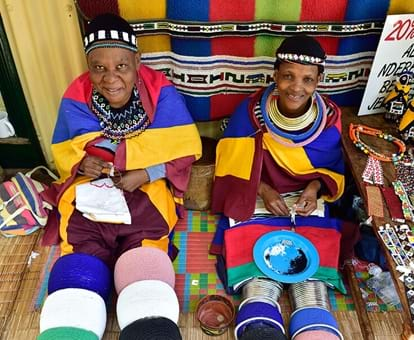The 8-Second Trick For South African Culture Today
The 8-Second Trick For South African Culture Today
Blog Article
Some Ideas on South African Culture Today You Need To Know
Table of Contents3 Easy Facts About South African Culture Today Shown8 Simple Techniques For South African Culture TodaySome Known Factual Statements About South African Culture Today All About South African Culture Today5 Easy Facts About South African Culture Today ExplainedExcitement About South African Culture Today
This follows with vocal singing and drum whipping. The groom and bride then meet with the senior citizens and chat regarding the importance of their union. A matter of importance in Zambian villages is the passing away of enjoyed ones. All participants of the village put money, time and effort with each other for the funeral of the deceased.Throughout the grieving period; guys stay outside your home and the women remain inside your home of the deceased. After discussing the departed, the village strolls to the location of funeral to state their last bye-byes. Music and dancing is an extremely important aspect of the Zambian society. The various tribal systems have their own dance types; nevertheless, makishi is usual among all people.
8 Simple Techniques For South African Culture Today
When it pertains to songs, drums are made use of the most, with a selection of drumming ceremonies. In Zambia, majority of the people are Christian; Protestant and Roman Catholic. There are little teams of Muslims and Hindus, with the rest complying with regional indigenous tribal ideas.

South African heritage and culture is profoundly diverse, and contains several groups of people that each have their very own customs and beliefs. Having such a diversity of individuals and societies is what makes South Africa so distinct. In the true sense of the expression, we are a rainbow nation.
Making it the 7th on the list of nations with the most Portuguese people in it outside of Portugal. Portuguese is not just a society, but it is additionally a language and a citizenship. Portuguese people stem from the country of Portugal in Europe, nonetheless, due to Portugal (like numerous various other nations in Europe) checking out the globe and dominating other nations during the 15th 20th centuries, South Africa has what we call Portuguese South African's living in it.
A Biased View of South African Culture Today
Among the noticeable attributes of the topography is a plateau that covers almost two thirds of the facility of the nation. The plateau complex rises towards the southeast, where it climaxes in the Drakensberg range, component of an escarpment that divides the plateau from the coastal locations. The Drakensburg consists of Sparkling wine Castle, the highest top in the nation.
The area north of the Witwatersrand, called the bushveld, inclines downward from eastern to west toward the Limpopo River, which forms the international border. The western area of the plateau, the middleveld, additionally comes down towards the west and differs in altitude between the highveld and bushveld. Between the Drakensburg and the eastern and southern coastline, the land comes down to the sea.
Nearer the coast there is a low-lying level called the eastern lowveld. Southwest of the plateau the nation becomes progressively extra arid, paving the way to the hostile desert of the Great Karroo, verged on the east by the reduced, better watered plateau of the Little Karroo. Dividing the completely dry southerly interior from the sandy littoral of the southern coast and West Cape is another array, the Langeberg.
More About South African Culture Today
The country's racially, ethnically, and politically separated background has generated nationwide and subnational symbols that still function as signs of the country, and others symbols that are approved just by particular groups. The monuments to white settler occupation and political prominence, such as the Afrikaner Voortrekker ("leader") Monument in Pretoria and the Rhodes Monolith honoring the British colonial realm building contractor and Cape head of state Cecil Rhodes, continue to be sectarian symbols.
The initial modern-day occupants were the San ("bushman") hunter-gatherers and the Khoi ("Hottentot") peoples, that herded livestock (South African culture today). The San might have existed for countless years and left proof of their presence in hundreds of ancient cavern paintings ("rock art"). Bantu-speaking clans that were the ancestors of the Nguni (today's amaZulu, amaXhosa, amaSwazi, and vaTsonga peoples) and Tswana-Sotho language groups (today's Batswana and Southern and Northern Basotho) moved down from eastern Africa as early as the fifteenth century

Both former republics of the Orange Free State and Transvaal (South African Republic) were established by Afrikaner inhabitants who defeated and dispossessed the Basotho and Batswana. Lesotho would have been by force integrated into the Orange Free State without the extension of British defense in 1869. The utmost marriage of the nation resulted from the South African Battle (18991902) in between the British and both Afrikaner republics, which reduced the country to spoil at the beginning of the twentieth century.
Afrikaners historically considered themselves the just real South Africans and, while giving complete citizenship to all homeowners of European descent, rejected that standing to individuals of color until the democratic shift of 1994. British South Africans preserve a feeling of cultural and social connection to Great Britain without damaging their identity as South Africans.
Facts About South African Culture Today Revealed
The variety and fragmentation within ethnic groups and the equilibrium of stress in between those groups during the twentieth century avoided interethnic civil dispute. While intergroup tensions over resources, entitlements, and political supremacy continue to be, those conflicts are as most likely to pit Zulu versus Zulu as Zulu versus Xhosa or African against Afrikaner.
From colonial India, British merchants and administrators brought the curved metal ornamental roofs and slender shoelace job pillars that next still represent the terraces of cottages in the areas and cities throughout the country. Holy places add a vital building element even in the tiniest towns. Along with the soaring steeples and classic stonework of Afrikaans Dutch Reformed churches, Anglican churches, synagogues, mosques, and Hindu shrines supply variety to the religious building scene.

Butchering and the brewing of conventional grain beer are essential look what i found in securing the involvement and goodwill of the forefathers that are thought about the guardians of great ton of money, success, and health. Indian areas keep their indigenous culinary practices and use them on Islamic and Hindu routine and ritualistic celebrations. Afrikaners and Coloured people gather at weekend breaks and unique events at multifamily barbeques called braais, where area bonds are enhanced.
Since this was the primary financial business of both black Africans and white colonists, problem in between those teams focused on the ownership of grazing land and livestock. In 1867, the largest diamond down payments on the planet were discovered at Kimberley in the west central location. The riches from those fields aided finance the exploitation of the best gold coral reef on the planet, which was found on the Witwatersrand in 1886.
Some Known Details About South African Culture Today
This led to misunderstandings and purposeful misrepresentation in the dealings of white inhabitants and federal government authorities with African chiefs during the early american duration (South African culture today). In the facility of African books, some elements of common and chiefly "tribal trust fund" additional reading land period were maintained, and also in white country areas, types of public tenure were still exercised in locations with African neighborhoods
After the democratic change of 1994, programs for land restitution, redistribution, and reform were set up, however progress has been slow. The white minority still regulates eighty percent of the land. Following agricultural land invasions in Zimbabwe, the Division of Land Affairs has actually vowed to speed up land redistribution.
Report this page